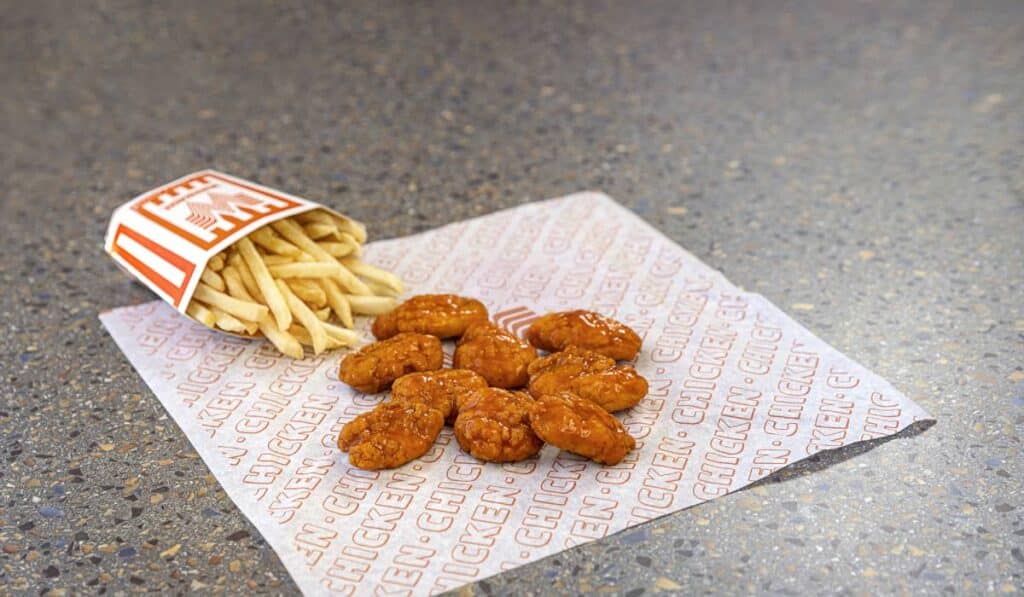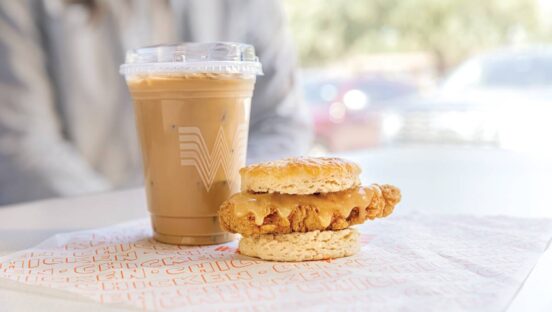Whataburger chief administrative officer Alex Ivannikov can’t survive a day without having at least a cup or two of coffee.
He doesn’t claim to be an expert. But he knows consumer tastes and preferences have evolved enough that most have become more selective about what’s needed from the beverage. So Whataburger developed a hot coffee it believes to be consistent with the quality of its other menu items and one that is a pleasure to drink on its own, as opposed to a “dairy beverage with a little bit of coffee.”
“When I look at our menu and see our burgers and our incredible chicken sandwiches and other menu items that are at a very high, elevated level, I like to joke that I wanted a coffee that our burger would be proud of,” Ivannikov says.
The chain doubled down by creating its first iced coffee, available in vanilla, mocha, and caramel flavors. As Ivannikov indicates, Whataburger is simply following guests’ footsteps. About 25 percent of customers consume iced coffee daily, an increase of 7 percent year-over-year, according to a survey by World Coffee Portal. Thirty percent of respondents purchased an iced coffee within the last 12 months. Peter Giuliano, executive director at The Coffee Science Foundation and chief research officer at the Specialty Coffee Association, told World Coffee Portal the prediction that 50 percent of coffee sold in the U.S. will be cold by 2030 is a conservative estimate. At Starbucks, the largest beverage chain in the world, 75 percent of U.S. drink sales are cold.
“People are picking up on [iced coffee] and some influencers are picking up on it naturally and spreading the love,” says Donna Tuttle, vice president of marketing and communications. “From what we’re seeing, people are loving the caramel and vanilla flavors the best. Mocha is a very close third.”
Ivannikov has been with the brand for nearly eight years, and in that time, Whataburger has looked at coffee many times. Within the last year, the company made a resolute commitment to envision a beverage that’s more relevant to today’s customers. The process took several months of research and development, to the point that Whataburger even brought in a coffee expert. The key was making sure the product paired well with the brand’s diverse menu, from cinnamon rolls to taquitos and burgers.
“One of the key objectives for us was to design something that worked really well with our savory and our sweet items on the menu,” Ivannikov says. “We went through dozens of different potential blends of roast levels and looked at different regions that play a complementary role in that taste.”
Whataburger launched these new coffees at a time when morning routines look different than they did prior to COVID. With more consumers working from home, the routine of picking up a drink on the way to the office isn’t happening as often. Breakfast is more “fluid,” notes Ivannikov (no pun intended from him). However, he adds that coffee is no longer just about the mornings. The proliferation of flavors and styles has made it more applicable to the lunch, dinner, and snack dayparts.
As a 24/7 chain, Whataburger understands its responsibility to serve customers quality coffee at both 3 p.m. and 3 a.m., whether they’re nurses, doctors, firefighters, cops, factory workers, or any other position that keeps odd hours.
“We have a great selection of menu items that certainly work for breakfast, lunch, and dinner, but are great options for any time of the day. Now Whataburger is also very different and unique in our approach to the 24/7 commitment,” Ivannikov says. “We’re open 363.5 days a year. About 8 to 10 percent of the U.S. population works an overnight shift depending on hours you count and how you look at it. And I think it’s fundamentally unfair for us as a society to expect those folks that work overnight to settle for a gas station and cold sandwich.”

The emphasis on coffee hasn’t taken away from food innovation. Whataburger rang in the New Year with the official launch of nine-piece boneless wings (called Whatawings on the menu), with honey butter, sweet and spicy, buffalo, and honey barbecue flavors. It’s been a secret internal menu item in the research and development department for some time, according to Ivannikov. It’s important to note that the wings are made from chicken tenders instead of breast chunks or other raw materials, making it a “different experience from most of our competitors.” The team would place the bites into a salad bowl, mix it with available sauces, and make themselves a nice afternoon snack.
The company didn’t give much thought to placing the product on the menu because it’s not something Whataburger would traditionally offer. Then, at some point, the conversation centered around how unfair it is to not offer the option to guests.
“Boneless wings have been just incredibly popular, and Whataburger has all the right ingredients to offer that,” Ivannikov says. “We source some of the best chicken in the industry and we have some of the best sauces in the industry. So why not combine that and offer it to our customers?”
Whataburger is testing the revised hot coffee and new iced coffee in San Antonio area restaurants with the hope that they can become permanent items in 2024. The Whatawings are positioned as a limited-time offer systemwide.
The brand uses a rigorous, slow approval process when it comes to permanent menu items. It involves a cross-functional team, consumer panels, and sensory evaluations. The first step is always to align the product with Whataburger’s values. As Ivannikov points out, many generations of leadership and management have done things in the past 74 years to get the brand to where it is today. Whenever he asks what someone thinks of Whataburger, a lot of times he hears, “I love Whataburger.” So the last thing Ivannikov or anyone else wants to do is harm that relationship.
“We carry that responsibility to make sure that anything we add to the menu matches what we already have on the menu and is consistent and congruent with those items,” Ivannikov says. “It’s a time-consuming process. We take it very seriously. And then finally, when we roll it out, most of our items join our menu as limited-time offers. It’s not very often that we add a permanent item to our menu right off the bat. We introduce limited-time offers and then in a way, it’s a democracy in the sense that our customers get to vote with their purchasing behavior, whether they love those items or not.”







